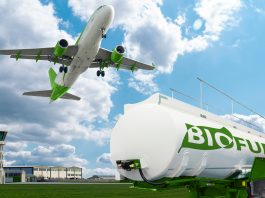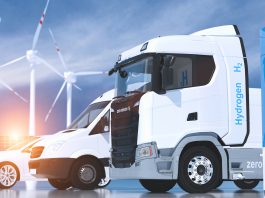Researchers working at Nanyang Technological University, Singapore (NTU Singapore) have created an innovative technique that mitigates plastic waste by converting it into clean hydrogen fuel.
Unlike polyethylene terephthalate (PET) plastic bottles which are recycled without difficulty, plastic waste comprising litter such as contaminated food packaging, styrofoam and plastic bags, poses recycling challenges. Unfortunately, this means that this waste is currently burned or buried in landfills, resulting in water, air, and ground pollution.
By utilising a high temperature chemical process called pyrolysis, the NTU scientists discovered they were able to convert plastic waste into two main products: hydrogen and a form of solid carbon, known carbon nanotubes.
This research represents a substantial step forward because hydrogen is valuable in electricity generating processes and powering fuel cells such as those in electric vehicles (EVs), with clean water as its only by-product.
Assessing commercial feasibility
In order to further improve the novel conversion technique and to evaluate its commercial feasibility, the group is test-bedding it on the NTU Smart Campus to treat local plastic waste, alongside Bluefield Renewable Energy (BRE), a local environmental company that centres its activity around mobile waste and resources technologies.
The multimillion-dollar project, supported by the Industry Alignment Fund-Industry Collaboration Projects (IAF-ICP) administered by Singapore’s Agency for Science, Technology and Research (A*STAR), intends to advance practicable solutions to economically scale up the conversion of waste plastics to hydrogen over the next three years.
As well as this, the project will investigate the possibility of other upcoming technologies for decentralised waste management. The conversion of difficult waste streams into energy and valuable resources, such as syngas, biochar, activated carbon and carbon nanotubes will be explored.
Waste management
Mr Craig Gavin, CTO, BRE, said: “During this pandemic, there has been an increase in plastic usage as most of us have been taking away our food in plastic containers and doing more grocery shopping. Current practices and efforts to recycle them have been challenging and require disposals in landfills and/or incineration plants leading to environmental contamination issues. In BRE, we pride ourselves in our ability to convert wastes into resources based on our flexi-pyrolysis system.
“Collaborating with NTU NEWRI has allowed us to utilise these environmentally unfriendly plastic waste stream as a feedstock and converting them into valuable resources. With the market pivoting to a Hydrogen powered economy, this collaboration allows us to expand our technological applications and commercialised locally created innovations, ultimately building a Singapore centred resource hub.”
Repurposing plastic waste from the oceans
In the project led by Associate Professor Grzegorz Lisak from NTU’s Nanyang Environment and Water Research Institute (NEWRI), marine waste was collected from local waters in partnership with the Ocean Purpose Project, a non-governmental organisation and social enterprise based in Singapore.
With approximately 269 million kilogrammes of plastic waste currently polluting the oceans, the researchers estimated that if it were converted into energy, this waste would be able to power an EV for 20 to 40 million kilometres.
“As part of NTU’s sustainability drive, in developing new ways to turn trash to treasure, we are looking to convert waste plastics that cannot be recycled into high-value chemicals and resources, such as hydrogen fuel, synthetic fuel that could replace petrol, and carbon nanotubes used for many industrial applications,” explained co-inventor Assoc Prof Lisak, Director of the Residues, Resource and Reclamation Centre (R3C) at NEWRI.
Ms Mathilda D’silva, CEO and Founder, Ocean Purpose Project, added: “Our collaboration with NTU NEWRI comes at a critical time when we need to rethink how plastics are recycled in Asia. As evident in our recent collaboration for the Ending Plastic Pollution Innovation Challenge (EPICC) United Nations Development Programme, where NTU NEWRI showcased how plastics in Lombok, Indonesia could be converted into hydrogen, it is clear that there is an untapped and highly available resource of ocean plastic that can be converted into the fuel of the future: hydrogen, which will prove a gamechanger in removing ocean pollution at scale.
“The cutting-edge research, innovation, and dynamism of the NTU NEWRI team is a dream collaboration for NGOs like us in ocean conservation, who have to move beyond awareness campaigns and beach clean ups towards completely disrupting our ideas of how plastic waste should be handled. We are proud as plastic-to-resources influencers to promote our Singapore-based research that will forge a new future for plastic recovery, potentially cleaning thousands of coastlines in Asia.”
Utilising solid carbon
The NTU group explained that the solid carbon from their novel conversion process is much simpler to store when compared to gaseous CO2 emissions from plastic waste incineration. Additionally, the solid carbon can be sold as a manufacturing feedstock for speciality chemicals or biofuels.
For example, it is a more environmentally friendly source of carbon for producing carbon nanotubes, which is utilised in many applications including batteries and composite manufacturing, clarified NEWRI Senior Research Fellow, Dr Andrei Veksha, the co-inventor of the process who is piloting the technology.
Attaining clean hydrogen fuel
Plastic waste-to-hydrogen is a two-stage process: first of all, plastic waste is decomposed upon heating into gases that comprise low concentrations of hydrogen molecules. In the second stage, the gases go into a reactor filled with a catalyst, and the technology enables the release of hydrogen fuel and the development of carbon nanotubes.
If this project is effective, it will make a significant contribution to reducing the total amount of waste disposed in Singapore and lengthen the duration of Singapore’s only landfill, which is currently projected to be full by 2035.









